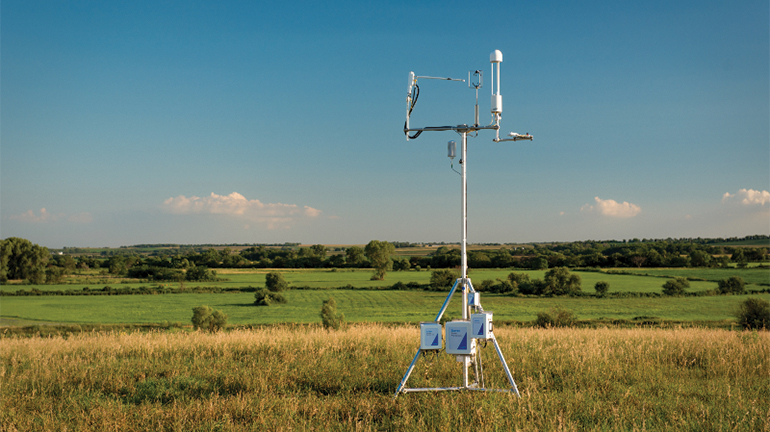
Knowing when, where and how much water to apply is a ubiquitous challenge for farmers. With funding from the Foundation for Food and Agriculture Research through the Irrigation Innovation Consortium (IIC), of which DWFI is a founding member, the institute is researching how to use the Parallel 41 Flux Network to monitor and measure crop water needs. The network is a series of eddy covariance flux towers across the central United States.
The Parallel 41 Flux Network provides the most accurate method of measuring ET (evapotranspiration: total plant transpiration and soil evaporation into the air), a key measurement for determining a crop’s unique daily water needs. Accurate and timely ET data is necessary for assessing water budgets, water productivity, plant stress and drought – ultimately helping growers precisely apply the amount of water that crops need, when they need it, to achieve the best possible yields.
The network towers are situated to represent different climate conditions, precipitation amounts and crop types. In the past year, with support from the IIC and LICOR Biosciences, DWFI upgraded six of the existing towers using new hardware and software that provides data in real time, greatly enhancing the network utility.
Daily ET measurements from these flux towers are freely available to farmers, NRD managers, scientists and others through the Parallel 41 website: parallel41.nebraska.edu
The flux tower measurements also are used to ground truth GloDET datasets. GloDET is a global satellite-based daily ET monitoring system launched by DWFI and partners in USDA-ARS, NASA and the University of Maryland in 2017. Last year, DWFI updated GloDET, adding 2018 and 2019 to the database in the MENA region, and is continuing to work toward the goal of real-time ET mapping. The GloDET portal provides free access to ET data: glodet.nebraska.edu
The GloDET project delivers new insights, management plans and drought resilience strategies at national and local levels to reduce drought impacts on food supplies and on the quantity and safety of water supplies in vulnerable communities.
GloDET datasets presently are being tested against energy balance flux data collected by the Parallel 41 eddy covariance towers in the central plains of the U.S., as well as in Brazil, in a project funded by Brazilian Federal agencies ANA and CAPES. This project is a partnership between DWFI and University of Sao Paulo, Federal University of Rio Grande do Sul, Federal University of Santa Maria, and the Brazilian Space Agency – INPE. The goal is to compare ET measured with eddy covariance flux towers in several natural and agricultural ecosystems in Brazil.
In the future, the daily ET product can be used to extend the estimation of the Evaporative Stress Index used in drought detection and early warning.

